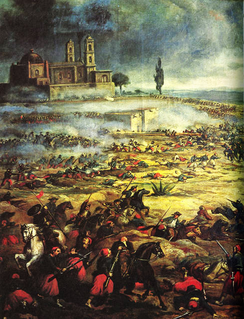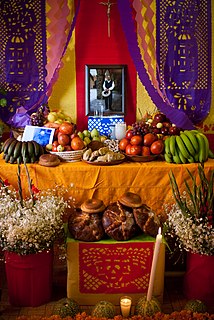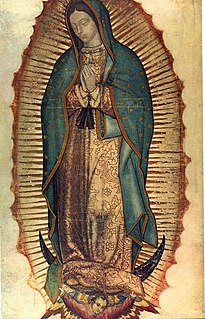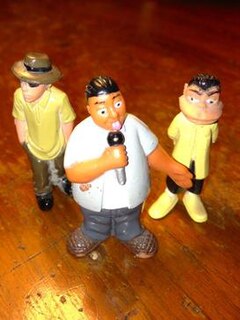 W
WAdolfo Cano Contreras is a Mexican communicator, entrepreneur and digital promoter. He is one of the founders of the digital platform Cultura Colectiva created in 2013 in Mexico, and chairman of the board of directors.
 W
WEnrique Alférez (1901–1999) was a Mexican-American artist who specialized in sculpting architectural reliefs and the human form.
 W
WBlaxicans are people who are both Black and Mexican American. Some may prefer to identify as Afro-Chicano or Black Chicana/o and embrace Chicano identity, culture, and political consciousness. Most Blaxicans have origins in working class community interactions between African Americans and Mexican Americans. Los Angeles has been cited as the hub for Blaxican culture. In 2010, it was recorded that 42,000 people in Los Angeles County identified as both Black and Latino, most of whom are believed to be both Black and Mexican American.
 W
WA Cal-Style VW is a lowrider influenced vintage Volkswagen, that for style and cruising was lowered to the extreme in the manner called "dumped" "slammed" or "laid out". The Cal-Style VW originated in the streets of Los Angeles in the late 1970s, when the first generation of teens from Latino neighborhoods veered away from the Low Riders that at the time were associated with gangs and criminal activity, and instead customized their economical VWs into lowriders for the cruising and teen subculture.
 W
WBeginning with the Chicano Movement of the 1960s, Chicanas used art to express political and social resistance. Through different art mediums both past and contemporary, Chicana artists have continued to explore and interrogate traditional Mexican-American values and embody feminist themes through different mediums including murals, painting, photography, and more. The momentum created from the Chicano Movement spurred a Chicano Renaissance among Chicanas and Chicanos. Political art was created by poets, writers, playwrights, and artists and used to defend against their oppression and societal marginalization. During the 1970s, Chicana feminist artists differed from their Anglo-feminist counterparts in the way they collaborated. Chicana feminist artists often utilized artistic collaborations and collectives that included men, while Anglo-feminist artists generally utilized women-only participants.
 W
WChicano or Chicana is a chosen identity for many Mexican Americans in the United States. The label Chicano is sometimes used interchangeably with Mexican American, although the terms have different meanings. While Mexican-American identity emerged to encourage assimilation into White American society and separate the community from African-American political struggle, Chicano identity emerged among anti-assimilationist youth, some of whom belonged to the Pachuco subculture, who claimed the term. Chicano was widely reclaimed in the 1960s and 1970s to express political empowerment, ethnic solidarity, and pride in being of Indigenous descent, diverging from the more assimilationist Mexican American identity. Chicano Movement leaders were influenced by and collaborated with Black Power leaders and activists. Chicano youth in barrios rejected cultural assimilation into whiteness and embraced their identity and worldview as a form of empowerment and resistance.
 W
WThe Chicano Movement, also referred to as El Movimiento, was a social and political movement in the United States inspired by prior acts of resistance among people of Mexican descent, especially of Pachucos in the 1940s and 1950s, and the Black Power movement, that worked to embrace a Chicano/a identity and worldview that combated structural racism, encouraged cultural revitalization, and achieved community empowerment by rejecting assimilation. Before this, Chicano/a had been a term of derision, adopted by some Pachucos as an expression of defiance to Anglo-American society. With the rise of Chicanismo, Chicano/a became a reclaimed term in the 1960s and 1970s, used to express political autonomy, ethnic and cultural solidarity, and pride in being of Indigenous descent, diverging from the assimilationist Mexican-American identity.
 W
WChicano rock is rock music performed by Mexican American (Chicano) groups or music with themes derived from Chicano culture. Chicano Rock, to a great extent, does not refer to any single style or approach. Some of these groups do not sing in Spanish at all, or use many specific Latin instruments or sounds. The subgenre is defined by the ethnicity of its performers, and as a result covers a wide range of approaches.
 W
WChico and the Man is an American sitcom television series that aired on NBC for four seasons from September 13, 1974, to July 21, 1978. It stars Jack Albertson as Ed Brown, the cantankerous owner of a run-down garage in an East Los Angeles barrio, and Freddie Prinze as Chico Rodriguez, an upbeat, optimistic young Chicano who comes in looking for a job. It was the first U.S. television series set in a Mexican-American neighborhood.
 W
WCinco de Mayo is an annual celebration held on May 5, which commemorates the anniversary of Mexico's victory over the French Empire at the Battle of Puebla in 1862. Led by General Ignacio Zaragoza, the victory of a smaller, poorly equipped Mexican force against the larger and better-armed French army was a morale boost for the Mexicans. Zaragoza died months after the battle from an illness, and a larger French force ultimately defeated the Mexican army at the Second Battle of Puebla and occupied Mexico City.
 W
WThe Day of the Dead is a holiday celebrated from 31st October through 2nd of November inclusive, though other days, such as 6th November, may be included depending on the locality. It originated, in part, in Mexico, where it is mostly observed, but also in other places, especially by people of Mexican heritage elsewhere. Although associated with the Western Christian Allhallowtide observances of All Hallow's Eve, All Saints' Day and All Souls' Day, it has a much less solemn tone and is portrayed as a holiday of joyful celebration rather than mourning. The multi-day holiday involves family and friends gathering to pay respects and to remember friends and family members who have died. These celebrations can take a humorous tone, as celebrants remember funny events and anecdotes about the departed.
 W
WEscaramuza charra is the only female equestrian event in the Mexican charrería. The escaramuza means "skirmish" and consists of a team riding horses in choreographed synchronized maneuvers to music. The women ride side-saddle and wear traditional Mexican outfit that include sombreros, dresses, and matching accessories. A team consists of 16 women, but only 8 ride at a time. The routine is practiced in a lienzo, or a circular arena.
 W
WLuisa Espinel, born Luisa Ronstadt, was an American singer, dancer, and actress. She toured, taught, performed on vaudeville, and appeared in a movie with Marlene Dietrich.
 W
WOur Lady of Guadalupe, also known as the Virgin of Guadalupe, is a Catholic title of the Blessed Virgin Mary associated with a series of five Marian apparitions in December 1531, and a venerated image on a cloak enshrined within the Basilica of Our Lady of Guadalupe in Mexico City. The basilica is the most-visited Catholic shrine in the world, and the world's third most-visited sacred site.
 W
WHomies are a series of two-inch plastic collectible figurines representing various Chicano Mexican American characters. The line of toys was created by David Gonzales and based on a comic strip that Gonzales created featuring a cast of characters from his youth. Introduced in the year 1998, Homies were initially sold in grocery store vending machines and have become a highly collectible item, and have spawned many imitation toys.
 W
WLotería is a traditional game of chance, similar to bingo, but using images on a deck of cards instead of numbered ping pong balls. Every image has a name and an assigned number, but the number is usually ignored. Each player has at least one tabla, a board with a randomly created 4 x 4 grid of pictures with their corresponding name and number. Players choose a tabla to play with, from a variety of previously created tablas, each with a different selection of images.
 W
WA lowrider or low rider is a customized car with a lowered body. These customized vehicles are generally individually painted with intricate, colorful designs, rolling on wire-spoke wheels with whitewall tires. Lowrider rims are generally smaller than the original wheels, ranging down to 13 inches (330 mm). They are also fitted with hydraulic or air bag systems that allow height adjustable suspension, where the vehicle is raised or lowered at the owner's command. Given these specific characteristics, while a lowrider is always a lowered car, a lowered car is not always a lowrider. The term is used to describe a class of vehicle, not simply the height from ground to chassis.
 W
WFashion is known to be a form of expression throughout many cultures, just like the Mexican American culture. Over the decades Mexican American women's fashion evolved to celebrate beauty and fashion standards of the day. However, such evolution wasn’t often well seen by society, instead it was often deemed non-normative and un-American. This style evolution started in the 1940’s when the Pachuca culture came to be, and later evolved into the Chicanas in the 70’s and the Cholas in the 90’s.
 W
WMontclare is one of 77 officially designated Chicago community areas located on the Northwest Side of the City of Chicago, Illinois.
 W
WOne Man's Hero is a 1999 historical war drama film directed by Lance Hool and starring Tom Berenger, Joaquim de Almeida and Daniela Romo. The film has the distinction of being the last film released by Orion Pictures' arthouse division Orion Classics, as well as being the last Orion Pictures film, until 2013's Grace Unplugged, when Metro-Goldwyn-Mayer revived the Orion Pictures brand.
 W
WPachucas were Mexican American women who wore zoot suits during World War II, also known as “cholitas”, “slick chicks”, and “lady zoot suiters”. The suit was a symbol of rebellion due to the rationing of cloth for the war effort. Wearing the longer and loose-fitting jackets and pants was therefore seen as being unpatriotic. The zoot suit was the most salient identifying feature of “pachuquismo”, a Mexican American youth subculture. This subculture emerged during a time of increased racism and the fight for Mexican American rights and equality within American society. Both men and women wore the fingertip coats, but for women it became more than just a style. Pachuca gangs, like the Black Widows and Slick Chicks, with their black drape jackets, tight skirts, fishnet stockings and heavily emphasized make-up, were ridiculed in the press. This was not just the case for pachuca women in gangs, but pachuca women in general. Participation in the movement was a way to openly challenge conventional notions of feminine beauty and sexuality, especially in Mexican culture.
 W
WThe Quebradita is a Mexican dance style. It is usually performed to a Regional Mexican song, specifically a lyrical charanga or instrumental mambo. The dance style was made especially famous by the Regional Mexican subgenre of Technobanda.
 W
WAndy Russell was an American popular vocalist, actor, and entertainer of Mexican descent, specializing in traditional pop and Latin music. He sold 8 million records in the 1940s singing in a romantic, baritone voice and in his trademark bilingual English and Spanish style. He had chart-busters, such as "Bésame Mucho", "Amor", and "What a Diff'rence a Day Made". He made personal appearances and performed on radio programs, most notably Your Hit Parade, in several movies, and on television. During this initial phase of his career, his popularity in the United States rivaled that of crooners Frank Sinatra and Perry Como.
 W
WRené Yañez was a Mexican-American painter, assemblage artist, performance artist, curator and community activist located in San Francisco, California. He was a well-known contributor to the arts of San Francisco and is a co-founder of Galería de la Raza, a non-profit community focused gallery that features Latino and Chicano artists and their allies. In the early 1970s, he was one of the first curators in the United States to introduce Mexico's Día de Muertos as a contemporary focus and an important cultural celebration.
 W
WA zoot suit is a men's suit with high-waisted, wide-legged, tight-cuffed, pegged trousers, and a long coat with wide lapels and wide padded shoulders. This style of clothing became popular in African-American, Mexican American, Italian American, Jewish American, and Filipino American communities during the 1940s.